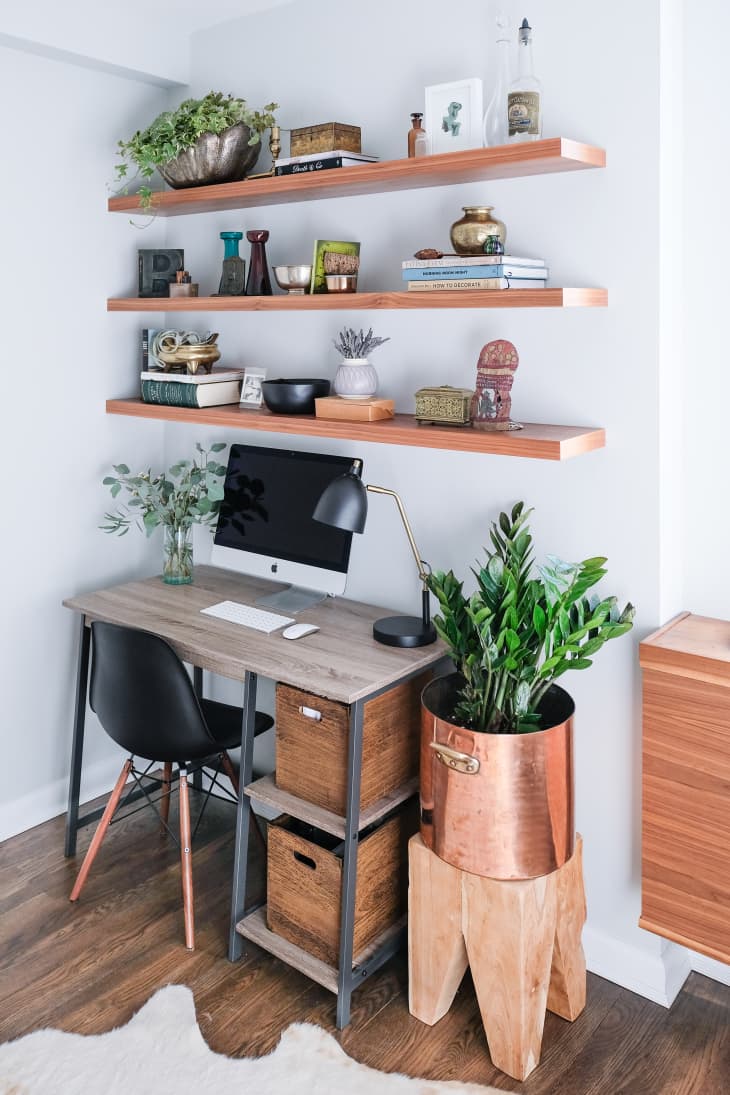The Home Office Mistake We Keep Seeing Over and Over Again

Ask anyone who sits behind a desk for hours at a time and they’ll tell you that proper posture is key to staying comfortable. That’s why good office ergonomics — such as precise desk posture, correct chair height, and convenient keyboard access — are crucial to getting through the workday.
To help you (and your joints) stay comfortable if you sit at a desk all day long, we put together a cheat sheet on how to correctly position yourself and your desk accessories. Read ahead for a foolproof guide to solid office ergonomics — your back and neck can thank us later.
Choosing the Right Desk Chair Height
According to the good folks at the Mayo Clinic, for proper desk posture, the height of your chair should be adjusted so that your knees are level with your hips. Here’s how to do it:
- Pick a comfortable chair that supports your spinal curves.
- Adjust the height of your chair so that your thighs are parallel to the floor and your feet rest flat on the ground.
- Make sure your armrests are adjusted so that your arms rest nicely and your shoulders feel relaxed.
- Use a footrest if your feet dangle.
Proper Keyboard and Mouse Positioning
Much like the height of your chair, the placement of your mouse and keyboard can make or break your workspace comfort. To score proper keyboard posture while you’re sitting at a desk or table, it’s vital that your wrists remain straight throughout the day and your hands live at (or below) elbow level. Here’s how the department of Ergonomics at UCLA says to position both at the office:
- Pull up close to your keyboard and position it directly in front of your body.
- Determine what section of the board you use most frequently, and readjust the keyboard so that section is centered with your body.
- Adjust the keyboard height so that your shoulders are relaxed, your elbows are in a slightly open position (about a 90-degree to 100-degree angle), and your wrists and hands are straight.
- Place the mouse as close as possible to the keyboard.
The Right Computer Monitor Placement
As a rule of thumb, your monitor should always be at one arm’s length away from your face. (Go ahead and stretch that arm out now, you know you want to). Here’s how the Mayo Clinic says to position it for proper back and neck support:
- Place the monitor directly in front of you an arm’s length away, with the top of the screen at or slightly below eye level.
- The monitor should sit directly behind your keyboard.
- Reduce glare (and subsequent eye strain) by carefully positioning the screen away from overhead lights.
- If you are working from bed or any other location that is not a desk, it can be helpful to invest in a laptop table that takes your computer away from your lap or your bed.
Where to Put Your Go-To Desk Objects
In order to remain comfortable (and ergonomically sound) while at your workstation, UCLA says your go-to desk objects—think: the telephone, stapler, and printed documents—need to always stay close to your body to minimize reaching and overextending. Here are a few of their desk setup tips:
- Place your telephone within easy reach (telephone stands or arms can help).
- Use an in-line copy stand to position source documents directly in front of you while you’re referring to them.
- Use a headset or speakerphone as often as possible to minimize wrist use.
- Stand up to reach anything that can’t be comfortably reached while sitting.